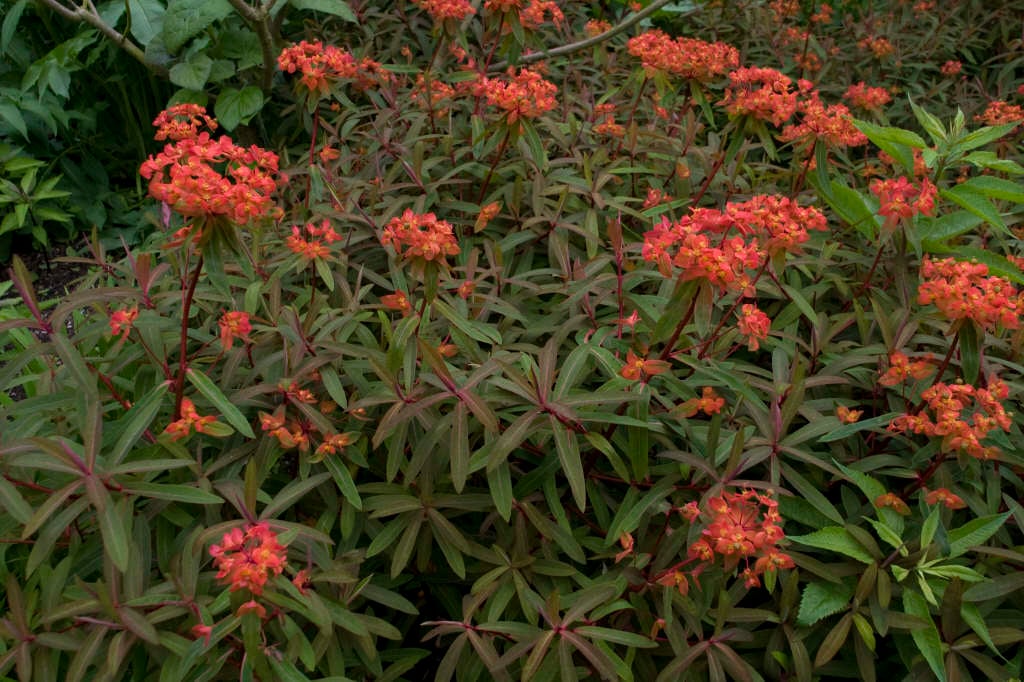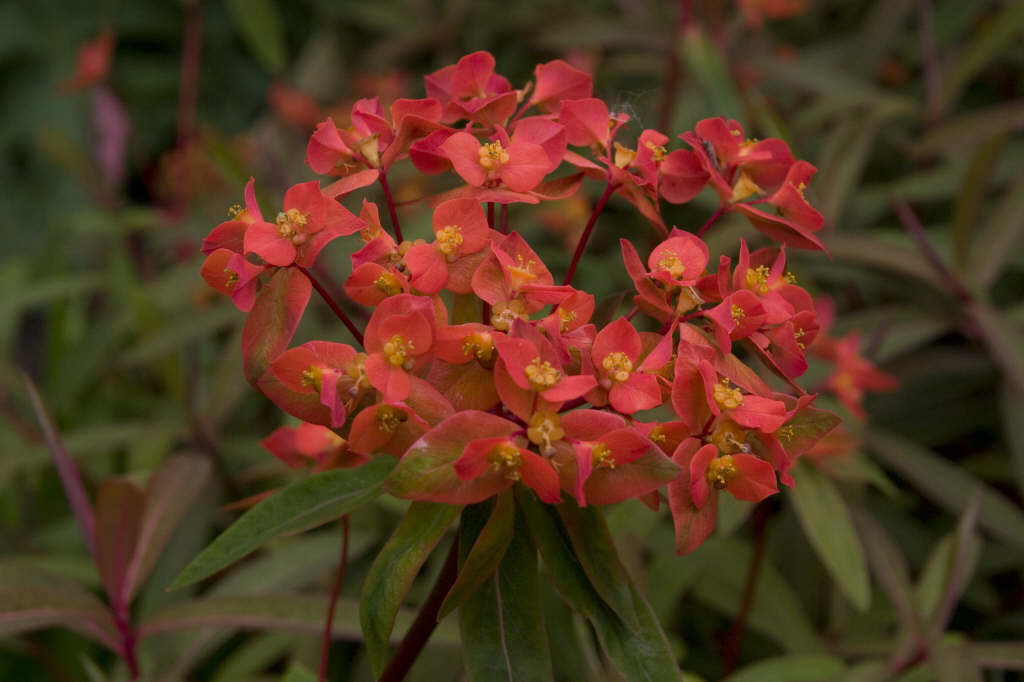Size
Ultimate height
0.5–1 metresTime to ultimate height
2–5 yearsUltimate spread
0.5–1 metresGrowing conditions
Moisture
Moist but well–drainedpH
Acid, Alkaline, NeutralColour & scent
| Stem | Flower | Foliage | Fruit | |
| Spring | Green Red | |||
|---|---|---|---|---|
| Summer | Orange Red | Green Red | ||
| Autumn | Green Red | |||
| Winter |
Position
- Partial shade
Aspect
North–facing or West–facing or East–facing or South–facing
Exposure
Exposed or ShelteredDrought resistance
Yes Hardiness
H7Botanical details
- Family
- Euphorbiaceae
- Native to GB / Ireland
- No
- Foliage
- Deciduous
- Habit
- Suckering
- Potentially harmful
- Humans/Pets: IRRITANT to skin/eye, harmful if eaten. Wear gloves and other protective equipment when handling. For further information and contact numbers regarding pets, see the HTA guide to potentially harmful plants
- Genus
Euphorbia can be annuals, perennials, shrubs or succulents, with milky sap and small flowers held within cupped, often colourful bracts
- Name status
Accepted
How to grow
Cultivation
Grow in moist, humus-rich soil in light dappled shade; May have the potential to become a nuisance on light soils if not managed well. See Euphorbia for further advice
Propagation
Propagate by division in early spring or take basal cuttings in spring or early summer; dip cut surfaces in charcoal or lukewarm water to prevent bleeding
Suggested planting locations and garden types
- Cottage and informal garden
- Coastal
- Wildlife gardens
- Flower borders and beds
Pruning
Cut back flowering shoots to ground level in late summer or autumn
Pests
Generally pest-free
Diseases
May be susceptible to rust diseases
Love gardening
Sign up to receive regular gardening tips, inspiration, offers and more
View our Privacy Policy
Get involved
The Royal Horticultural Society is the UK’s leading gardening charity. We aim to enrich everyone’s life through plants, and make the UK a greener and more beautiful place.

